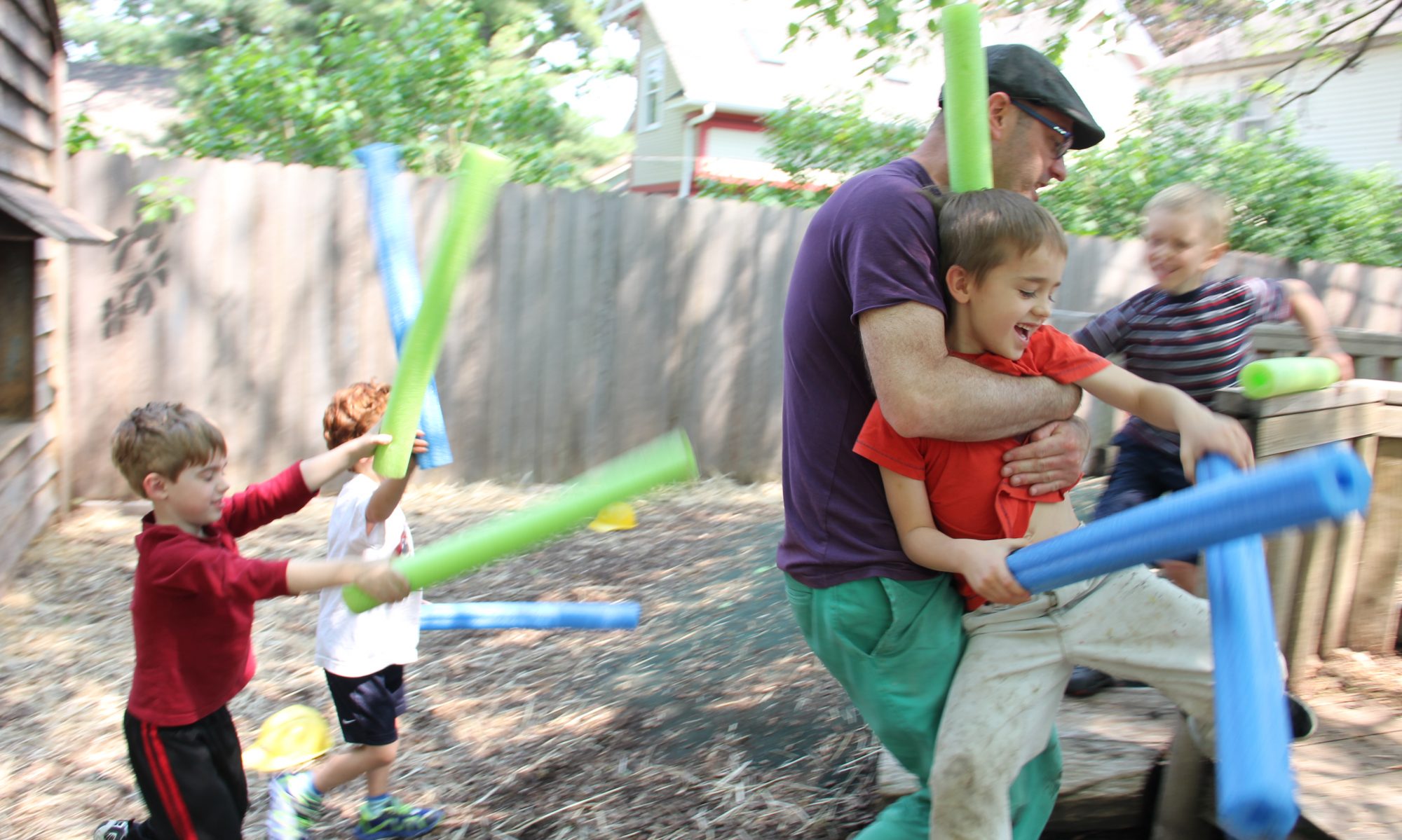One of the best activities for literacy in an early childhood program turns out to be one of the best for building community, social skills and learning about nutrition. Of course, I am talking about meal times. There is a lot of attention paid to “family dinner” and its importance for healthy well-adjusted youth (and families). The same could be said about meal times in childcare centers and other programs. Meal times are a time for informal conversation. In a classroom, a child has experience addressing a group formally during group times. A child gets experiences speaking one on one with a teacher or a friend. Most preschoolers will get experience speaking informally in a small group during play. Meal times allow children to learn how to listen to and enter into conversation informally when there may be more than one conversation going on at once. On top of that, the conversational skills will vary from child to child so there can be quite a bit of non-verbal negotiation.
Some young children will need help entering a conversation. Some children will want absolute quiet before they will talk. They usually try to achieve this by yelling loudly, “I’m trying to say something.” I have yet to see this strategy work. Of course, the child who waits patiently for it to be quiet also has a hard time joining the conversation.
As a teacher, it can be difficult to help children without taking over the conversation myself. I try to think of the direct instruction given to children as a Tweet, no more than 140 characters. I will say something like, “Say her name and then say what you wanted to tell her.” I’ll let the child try that before giving more direction. If that attempt failed, I might say, “Say her name loud enough so she turns toward you. Don’t worry about her being totally quiet. Just start telling her.”
My favorite thing is sitting and listening to the three or four conversations going on at meal time. As children get more comfortable e=with it, they enter one conversation and then another. Each year, the class has certain jokes and “games” we play. This year, someone always asks to play the “pretend food game.” The game starts with me saying, “We left some toys on the table. I know it looks like food, but don’t eat it.” Then they come up with ideas for what their food could be. Someone holds up a spoonful of yogurt and says it’s glue. “No, don’t eat glue. Oh no!”
Meal time conversations can also be about home life. Someone might make up a story. It can go a million different ways. The important thing is that we are all experiencing it together, creating our own classroom culture. Meal times seldom come up when talking about curriculum, but I think they say a lot about the teachers’ philosophy of education.
